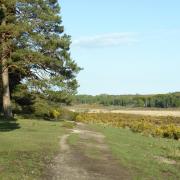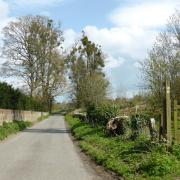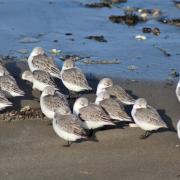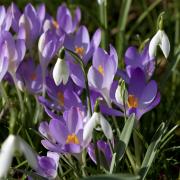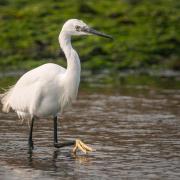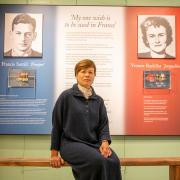In the 1990s, the number of field crickets in the UK had reduced to a single surviving colony of just 100 in West Sussex. Now, thanks to work at Shortheath Common Local Nature Reserve in Bordon, these numbers have grown exponentially
Hampshire has around a third of Britain's remaining lowland heathland, a type of wild, ancient landscape. Although once considered of little ecological value, these habitats are now recognised for being vital spaces that can support a rich variety of flora and fauna, meriting special protections.
Shortheath Common Local Nature Reserve is an area of lowland heathland and mire near to Bordon in the east of our county, and thanks to careful conservation efforts, it is now home to a thriving population of field crickets.

Widespread across many parts of Europe, the field cricket is one of the most threatened invertebrates in the UK. This remarkable brown-black insect can be identified by its vibrant yellow stripe, and wings stamped with patterns that resemble wrought iron work. It is incredibly active and can walk an astonishing 100 metres each day. The males use their wings to ‘stridulate’, which make the familiar chirp, or ‘singing’ sound, that is deployed to attract a female to the entrance of their burrow.
First released by Natural England onto Shortheath Common back in 2000, the species has been nurtured over the following decades, to support its survival. Whilst grassy heathland habitats are ideal for field crickets, the Shortheath site has needed constant management to ensure optimal conditions. This includes maintaining a balance of bare, and re-vegetating ground; keeping bracken under control; and clearing scrub. By 2021, there were 128 singing males observed providing reassurance that the population was stable.

This is an important success story as in the early 1990s the number of field crickets in the UK had reduced to a single surviving colony of just 100 in West Sussex. The plucky population at Shortheath Common is now one of six in southern England.
About the author
Nicki Paton is a Countryside Team Manager with Hampshire County Council’s Countryside Service. The service looks after many of Hampshire’s major country parks and National Nature Reserves, as well as some heritage monuments, local recreational spaces, and large areas of common land. It also manages Hampshire’s 3,000 miles of public rights of way.




